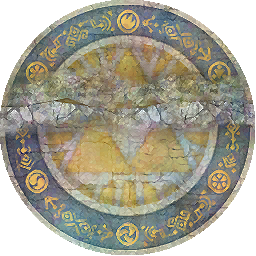The following represents our view of the canonicity of content in The Legend of Zelda series. Rather than simply marking content as being canon or non-canon, it will focus on a common sense approach to canonicity by assessing if information is ubiquitously canon, additively canon, or non-canon.
Ubiquitously Canon
Ubiquitous canonicity is when information about a topic is widely known to be true, confirmed by many sources over time.
Additively Canon
Additive canonicity is when partial information is provided about a topic by multiple sources that don’t contradict one another.
Non-Canon
Information is considered non-canon when it doesn’t meet the minimum requirements to be considered a source of canonical information.
Canonical Sources
- Companion Media (Books, Art, Movies)
- Developer Interviews
- Games (When published on a console or device created or directly licensed by Nintendo with at least one Zelda team member in a key person role: supervisory or producing)
- Companion Media (Created by or co-developed with Nintendo)
- Games (Created by or co-developed with Nintendo)
- Games (Created by a non-Nintendo Team with key Zelda team members providing oversight or contribution)
- Games (Created by a non-Nintendo Team without key Zelda team member providing oversight or contribution)
Translated Materials
In order to provide an accurate view of information, Japanese language sources should be treated as more accurate than any other language.
Contradicting Information
In some cases, developer interviews and companion media can directly contradict the source material of a game. In such cases, the game should be treated as the more accurate source of the two.
Additive Canonicity
When multiple sources provide information about a topic, they may cover different details about that topic. When the information from different sources don’t contradict one another, they should all be taken into account in order to provide a complete view of the topic. For example, in the first game in the series, The Legend of Zelda: The Hyrule Fantasy, the text in level seven says the following in U.S. English:
“10th Enemy has the bomb”
The Japanese text for the same room says the following:
“Look for the lion key”
Both versions are true and they don’t affect the outcome of the narrative, so they should both be treated as canon.
F.A.Q.
What is a “Mainline” game?
Any game that was created by, co-developed, or supervised by with Nintendo and is or was available on a Nintendo created or licensed device. The technology used to produce the game is not taken into account a.k.a. “2D” games are considered just as valid as “3D” games.
Bad-Faith Arguments
The following is a list of bad-faith arguments for determining the canonicity of information.
- I don’t like it
- Logical fallacies
Excluded Reasoning Criteria
The following represents a list of reasons that are excluded when determining the canonicity of information.
"The writing is bad"
"Bad writing" is subjective and does not specifically target reasons that something should be excluded from canonicity. On the other hand, if the writing contradicts known canon information, that should be considered when determining the canonicity of information.
